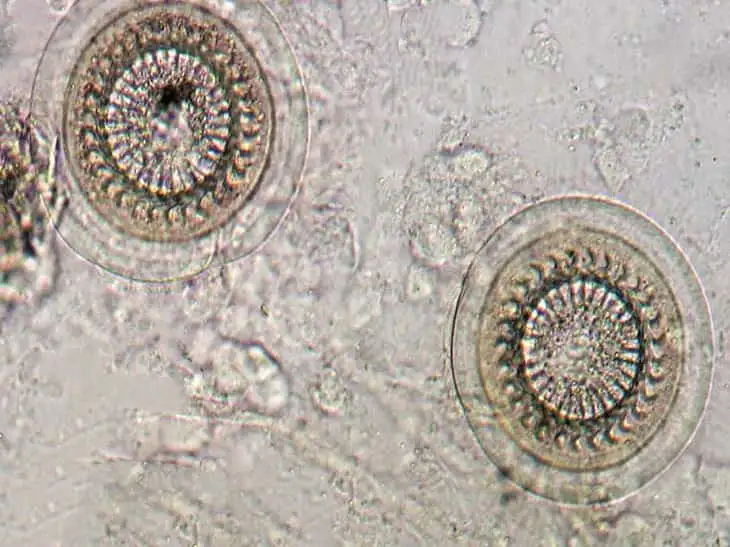Trichodina

Trichodniosis is a disease caused by single-celled flagellates, Trichodinae, which often parasitize on pond fish such as koi and goldfish.
Trichodina are protozoan infusoria that fall into three categories: celites, flagellates and sporozoa. It is a lamellar parasite with cilia that allow it to move. This parasite can only be seen under a microscope. On average, it measures 50 µm (= 0.05 mm), approximately the same size as a human hair. The parasite spreads by fission. Under favourable conditions, the trichodines multiply very rapidly. The comfortable temperature for the development of the trichodinosis is between 4°C and 30°C. This means that the parasite can be found in almost any aquarium. The trichodina can attach not only to the body of the fish, but also to their gills, which may cause breathing difficulties for the victim. Strong aeration of the water in an aquarium infected with trichodinosis is therefore required.
The body of trichodinosis infected fish has a light-colored plaque that makes them very uncomfortable, and they will scratch against the substrate and stones. Furthermore, the gills of the fish change their colour and become slimy.
Symptoms of trichodinosis:
- sores on the body;
- loss of appetite;
- The fish look for a hiding place in the tank;
- fish lie on the bottom with their fins clamped;
- irritated skin;
- In severe cases, the fish have a grayish film on their body.
If you scrape off the mucus from infected fish and examine it under a microscope, you can see something round, moving like a carousel, it is Trichodina.
Treatment
The greatest effect in the treatment of trichodinosis can be achieved at an early stage of the disease. If the disease is neglected, however, treatment may take much longer.
To treat trichodinosis infected fish should be transferred to a prophylactic aquarium in the water, which should be added table salt in the proportion of 40 grams per 20 liters and gradually raise its water temperature above 31° C.
To prevent Trichodina infestation, it is important to feed the fish during the summer with quality food containing all essential nutrients, vitamins and minerals. This ensures that the fish have a strong immunity and can withstand the parasite during the winter and spring months. Avoid overpopulation in the aquarium, and keep the water quality at an appropriate level. In case of the slightest suspicion of a trichodinosis infection, use a water filter equipped with activated carbon, which cleans the water of all kinds of micro-dust particles and various pathogens.


